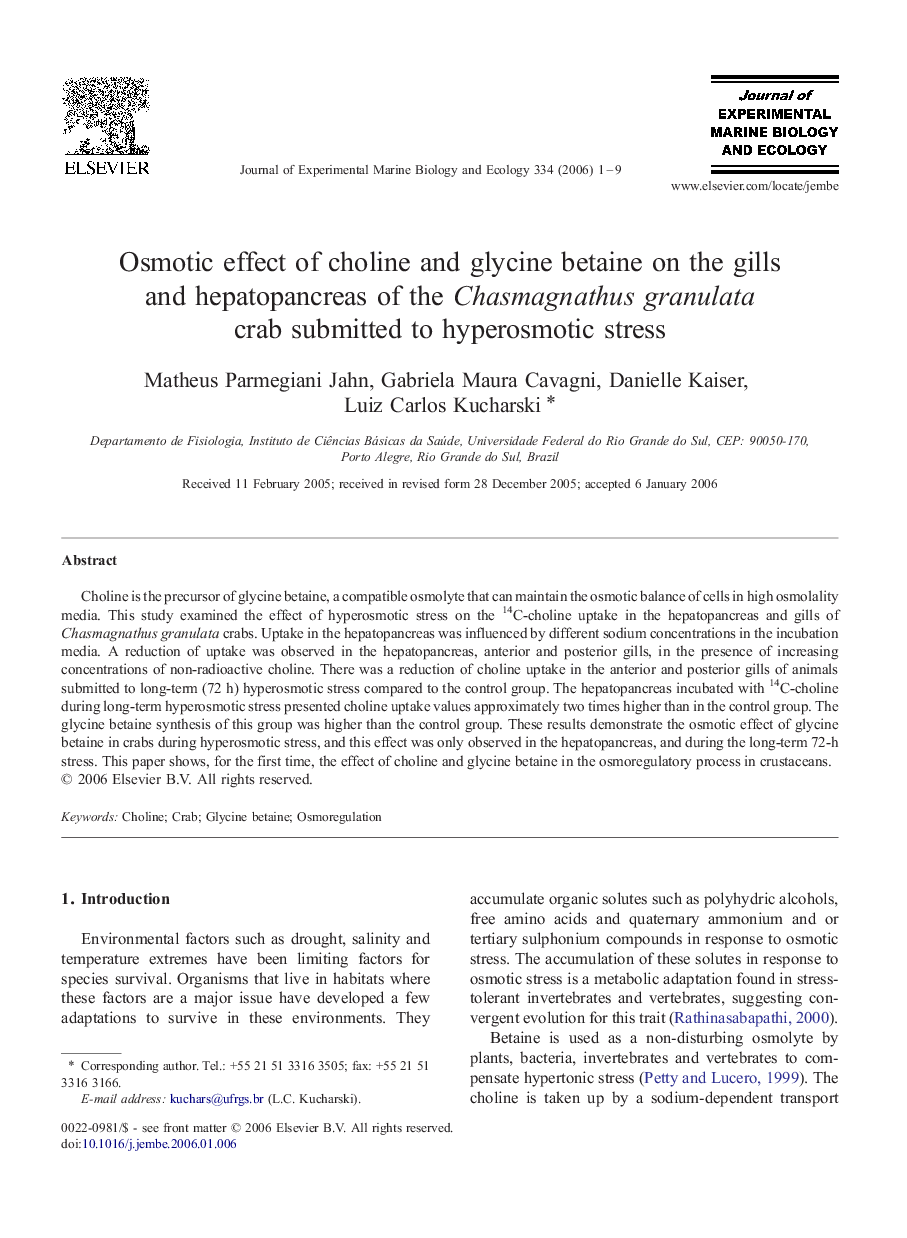| Article ID | Journal | Published Year | Pages | File Type |
|---|---|---|---|---|
| 4397998 | Journal of Experimental Marine Biology and Ecology | 2006 | 9 Pages |
Choline is the precursor of glycine betaine, a compatible osmolyte that can maintain the osmotic balance of cells in high osmolality media. This study examined the effect of hyperosmotic stress on the 14C-choline uptake in the hepatopancreas and gills of Chasmagnathus granulata crabs. Uptake in the hepatopancreas was influenced by different sodium concentrations in the incubation media. A reduction of uptake was observed in the hepatopancreas, anterior and posterior gills, in the presence of increasing concentrations of non-radioactive choline. There was a reduction of choline uptake in the anterior and posterior gills of animals submitted to long-term (72 h) hyperosmotic stress compared to the control group. The hepatopancreas incubated with 14C-choline during long-term hyperosmotic stress presented choline uptake values approximately two times higher than in the control group. The glycine betaine synthesis of this group was higher than the control group. These results demonstrate the osmotic effect of glycine betaine in crabs during hyperosmotic stress, and this effect was only observed in the hepatopancreas, and during the long-term 72-h stress. This paper shows, for the first time, the effect of choline and glycine betaine in the osmoregulatory process in crustaceans.
